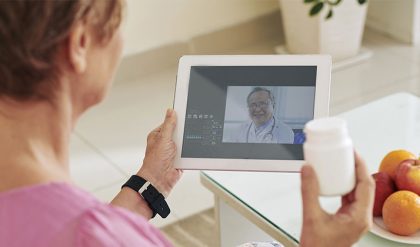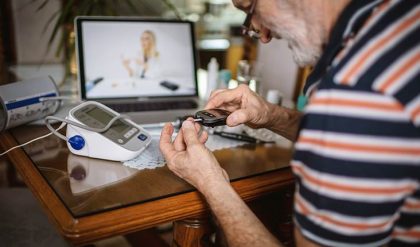While many people use telehealth and telemedicine interchangeably, it’s important to note that for legal and reimbursement purposes, these two terms may be defined differently. For example, In the United States, telemedicine usually refers specifically to live video consults; whereas, telehealth is often defined more broadly.
Telehealth is typically seen as encompassing elements of telemedicine, but it also includes administrative tasks, remote patient monitoring, and other non-direct interactions. In other words, all telemedicine activities fall under the telehealth umbrella, but not all telehealth activities are considered to be part of telemedicine.
For the purposes of this chapter we will use telemedicine to and telehealth interchangeably to refer to the more general definition as defined by WHO.
Types of telehealth consultations
There are numerous ways that telehealth services can be delivered. Each of these delivery methods offers certain benefits and drawbacks. Below are commonly understood types of telehealth (Daniel & Sulmasy, 2015):
Live (or synchronous)
In these interactions, patients and providers or two providers interact in real time. The real-time component of these interchanges allows for information to be shared more transparently and for important follow-up questions to be asked (it may also help a reluctant patient develop trust in the provider — trust or the lack thereof is a common impediment to patient populations embracing telehealth).
This real-time aspect also means that it can be a useful tool for psychological counselling (Bell, 2016). Typically, live interactions use technologies, such as: phone and secure video link.
Store-and-forward (or asynchronous)
In store-and-forward, important information — such as video and photographic images and diagnostic tests — is stored in a database and then sent on to a medical provider, usually a specialist, at a later date.
The specialist evaluates this information and then responds back. Because there is a time lag, this limits the possibility of asking questions.
However, it may also streamline the process — since it does not require coordinating numerous participants’ schedules. The store-and-forward process utilizes a wide range of technologies, such as SMS and patient portals.
Remote patient monitoring (RPM)
In remote patient monitoring, patients or providers (frequently nurses) will be able to enter key healthcare data and indicators, such as blood pressure, blood glucose levels, or weight, over an extended period of time.
This information will then be collected into a single dataset, and the healthcare team can evaluate any meaningful trends or changes. It can be an invaluable tool/methodology for people with chronic diseases, such as Type II diabetes or congestive heart failure. There are numerous tools that can be used to collect data in an easy to utilize format.
mHealth
mHealth refers to healthcare solutions or health delivery that is mobile-based or mobile-enhanced. These can include cell phones, tablets, personal digital assistants (PDAs), and mobile apps.
These can be used for text messages, recording and inputting important data, communicating with providers over video or instant messaging. With consumer wellness devices and smartphones becoming ubiquitous, all aspects of healthcare are being impacted by mobile technology.
Hybrid consultations
These combine elements of both synchronous interactions and store-and-forward processes. In a hybrid consultation, a specialist usually has access to complex diagnostics that were performed at an earlier date.
However, the specialist also has the ability to engage directly with the patient and/or family members. According to Telehealth Resource Centers (2018), these hybrid consultations are most commonly seen in specialties, such as dermatology and cardiology.
However, hybrid consultations still lag behind synchronous and asynchronous interactions in the frequency of use (Deldar, Bahaandibeigy, & Tara, 2016).
No matter what delivery method is selected, the goal remains the same — improving patient outcomes.


